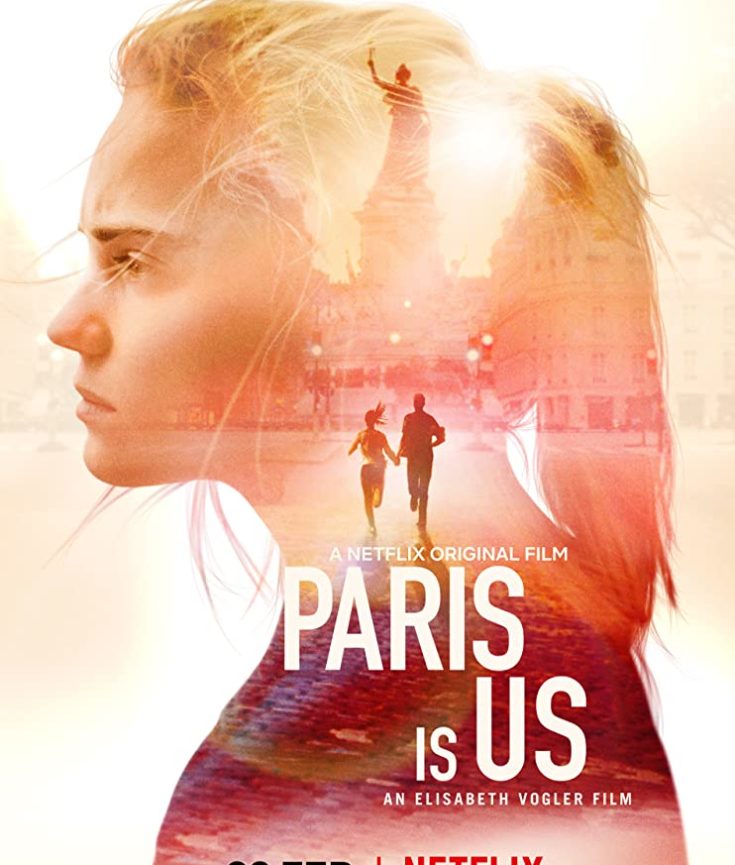Netflix’s French arthouse film “Paris Is Us,” directed by Elisabeth Vogler, is a dazzling but ultimately garbled Millennial manifesto on the formation of identity in a trauma-stricken world. The first few minutes are deceptively straightforward: The protagonist, Anna (played by the enchanting Noémie Schmidt), meets Greg (Grégoire Isvarine) at a rave. He asks to touch her hair. They kiss. Suddenly, the music ceases and the two lovers engage in a voiceover dialogue about life being a simulation. Wait, what? This trippy duet signals the film’s wayward dive into the tension between illusion and reality that is thematically central to the story, but that Vogler never fully develops.
An abrupt jump in time lands us in the midst of their troubled relationship. Greg announces that he’s moving to Barcelona, but Anna refuses to go with him — after all, she likes her job at the little Parisian coffee shop. Luckily, she doesn’t get on that flight and it crashes en route to Barcelona. Or maybe she was on that flight. Was Greg on that flight? Did the crash even happen? Reality is now completely up for grabs. Once the plane crashes, any hope for a linear narrative is lost. The remainder of the film is a highly impressionistic collage of memories, dreams, and alternative timelines punctuated by many, many monologues in voiceover.
With the crash, the image spins out of control into a whirling picture of an empty theatre, with Anna now a bewigged and bewildered platinum blonde audience member. Cut to a serene shot of Anna and Greg nuzzling each other on a sun-soaked beach, evidently in the happier, early days of their romance. But who can say? It’s really anyone’s guess whether each scene is a memory from bygone days, a leap into the future, or a glimpse of an alternate reality in which Anna and Greg live happily ever after.
Each of the vignettes is exquisite — evocative or surreal or just plain pretty. But, alas, there is little connective tissue between them. One begins to wonder if there is a through line (which, admittedly, would be a welcome reprieve) or if yet another artsy film has fallen to queasy self-indulgence. There may be some glue that is holding together, however loosely, this assemblage of disparate images: The film’s fragmented structure is perhaps meant to mirror the fragmenting world it depicts. This much is evidenced by its title: “Paris Is Us” is reminiscent of the “Je suis Charlie” (“I am Charlie”) solidarity movement in response to the 2015 terrorist attack on Charlie Hebdo, the Paris-based satirical magazine.
Indeed, the November 2015 Paris attacks figure prominently in the latter half of the film. Vogler shows Anna at vigils honoring the victims, with supporters carrying “Je suis Charlie” signs in the background. She runs through the police-lined streets of Paris as bombs go off and birds take flight around her. For a plot that doesn’t bother to unfold through a linear time progression, nightmarish visions certainly progressively become the norm. Anna becomes the terror and trauma that surrounds her. She is Paris. Paris is her.
Throughout the majority of the film, Vogler maintains the intense close-ups and dizzying camerawork of the opening scene at the rave, suggesting that everyday reality is as chaotic as a drugged-up night of clubbing. Remarkably, Vogler, who doubles as the film’s cinematographer, limits the gaze to Anna’s body throughout much of the film. The effect is one of mildly claustrophobic, titillating voyeurism. The close-ups of her freckled shoulder, her hair resting on her collarbone, her calves, and her left eye are enthralling. Her head bobs in and out of the frame like a buoy, and it’s clear that she’s but a fragile little vessel wracked by the tumult of the terrifying world around her.
However stunning the film’s cinematography, Vogler severely dilutes it with a mélange of incomprehensible monologues. Touching upon everything from simulation theory to burn-it-to-the-ground anarchism, Anna’s feverish voiceovers fizzle out quickly. At one moment she’s slamming herself against a concrete wall; at the next, she’s drowning in a flooded, but oh-so-chic Paris. The whiplash is nauseating.
One thing, at least, is certain: In her wandering, Anna embodies the hopelessness that a politically fraught, terrorized Paris sustains. Hers is the resignation of an entire generation that knows it cannot change the world. In the final montage, the platinum blonde Anna passes through the curtain from the stage to the rave, from illusion to reality — or, what seems to be reality. And it’s back to techno-fueled hedonistic romping.
This article originally appeared in The Harvard Crimson on March 5, 2019: https://www.thecrimson.com/article/2019/3/5/paris-is-us-review/
